Table of Contents (click to expand)
Lightning causes trees to explode because they offer high resistance to the flow of electricity, which causes a high heat build-up as lightning travels through a tree’s frame. The extreme temperatures can sometimes cut trees in half, and the sap in the bark of the tree is subject to extreme temperatures, which can make the tree explode.
You’ve almost certainly seen cartoons and caricatures depicting people being struck by lightning. Similarly, you might have also seen pictures of trees (or even trees in real life) that have been struck by lightning. When humans are struck by lightning, it generally causes burns and several other injuries (some of which might even be fatal), but lightning-struck trees are often cut in half or in rare cases, they even explode! How does that work?
How does lightning cut trees in half, but in the case of humans, lightning strike victims don’t generally lose their limbs?
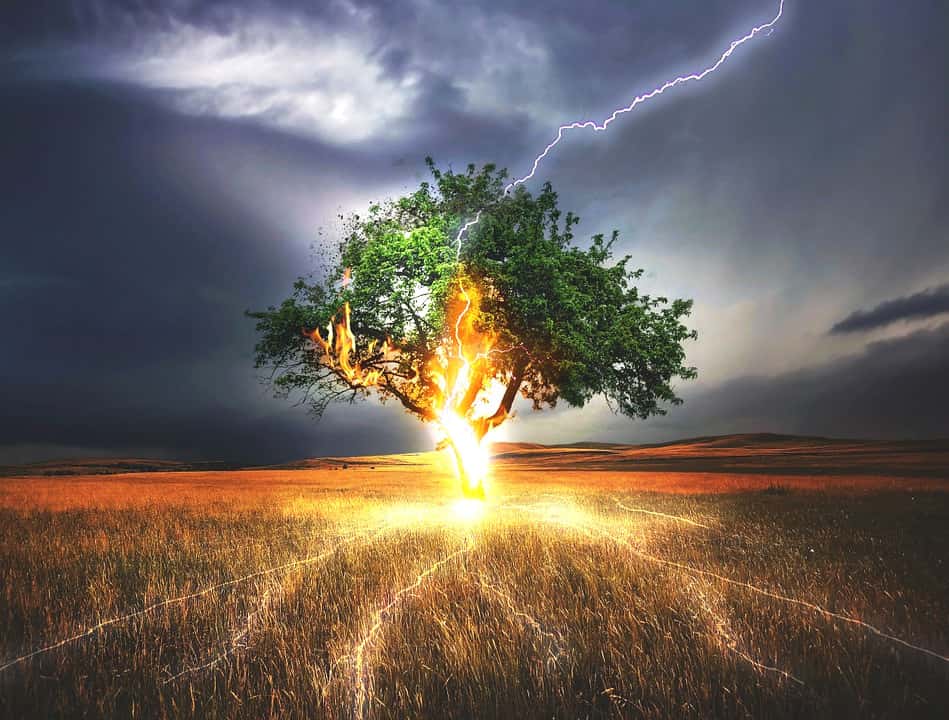
The answer to this question lies in how lightning interacts with humans and trees, respectively.
What Happens When A Human Is Struck By Lightning?
You might already know that a lightning strike is basically just a powerful flow of electrons (albeit the process of its buildup is quite interesting).
It’s obvious that lightning strikes are particularly dangerous for any living creature, including humans. The human body, or any other living thing, is simply not built to conduct hundreds of kilowatts of electricity!
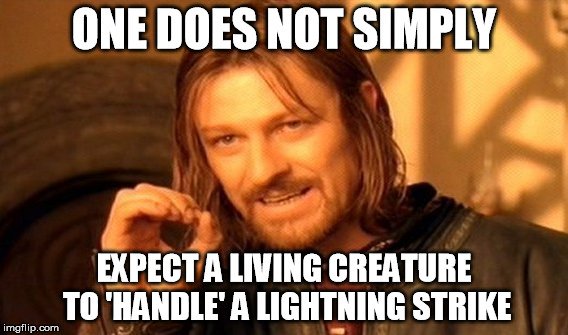
When a lightning bolt strikes a human, energy to the order of a few hundred kilowatts courses through their body. This, needless to say, has rather unpleasant and painful effects on the body.
Interestingly, however, humans are excellent conductors of electricity. You might have heard that humans are composed of “70% water”; as such, the human body does not offer much resistance to the flow of a huge electric current passing through it. The body (and the fluids inside it) offer low resistance and thus have higher conductivity; consequently, the passage of even a huge electric current does not generate as much heat as it would if it were to pass through a higher-resistance material (e.g., a tree).
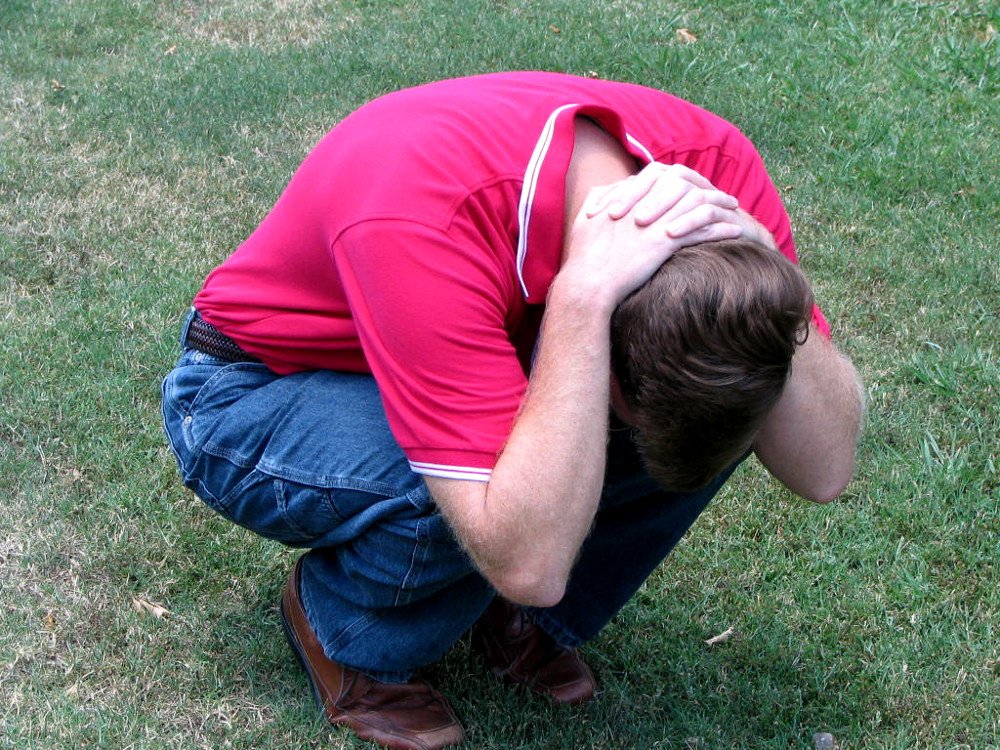
Thus, when lighting strikes a human, the body becomes a ‘passage’ for the former to run straight into the ground. However, since humans do offer some resistance, lightning victims are often known to suffer from severe burns, nerve tissue damage, shock or cardiac failure (some of these may even be fatal).
Now, let’s take a look at what happens in the case of trees.
Also Read: What Happens When A Tree Is Struck By Lightning?
What Happens When Lightning Strikes A Tree?
It is quite common for trees to be struck by lightning, and what’s even more unfortunate is that there is nothing they can do about it. A tree struck by lightning may behave in unpredictable ways: some trees look absolutely normal following a lighting strike, while others explode or burst into flames! The reason lightning strikes are (often) so brutal to trees is the resistance they offer to the flow of electricity as it passes through them.
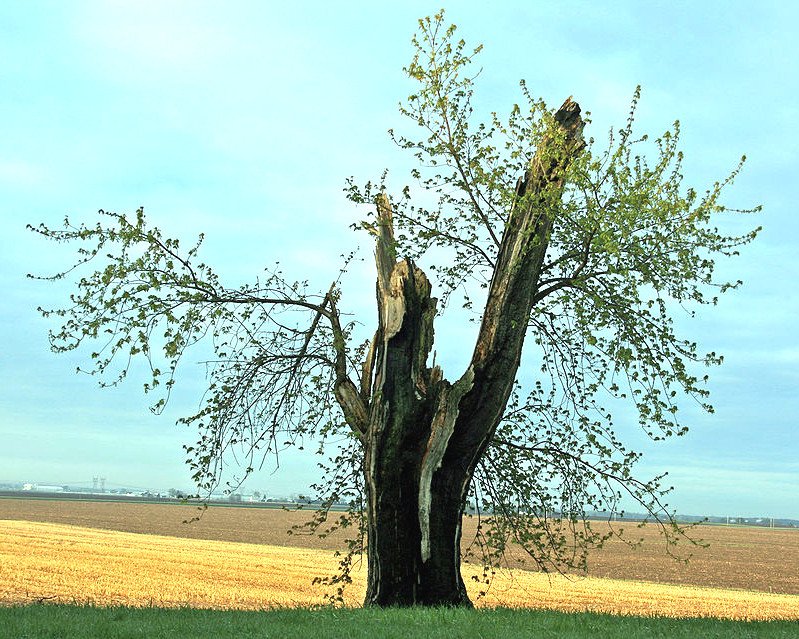
You see, unlike humans, trees are not good conductors of electricity. As such, they offer a lot of resistance to the flow of electricity through their ‘body’. You might recall from your high school Physics class that when there is high resistance to the flow of current, heat is produced in the system. The same thing happens in the case of trees.
The trees’ resistance to the flow of electricity causes a high heat built-up as lightning travels through a tree’s frame. Such insanely high temperature can sometimes cut trees in half.
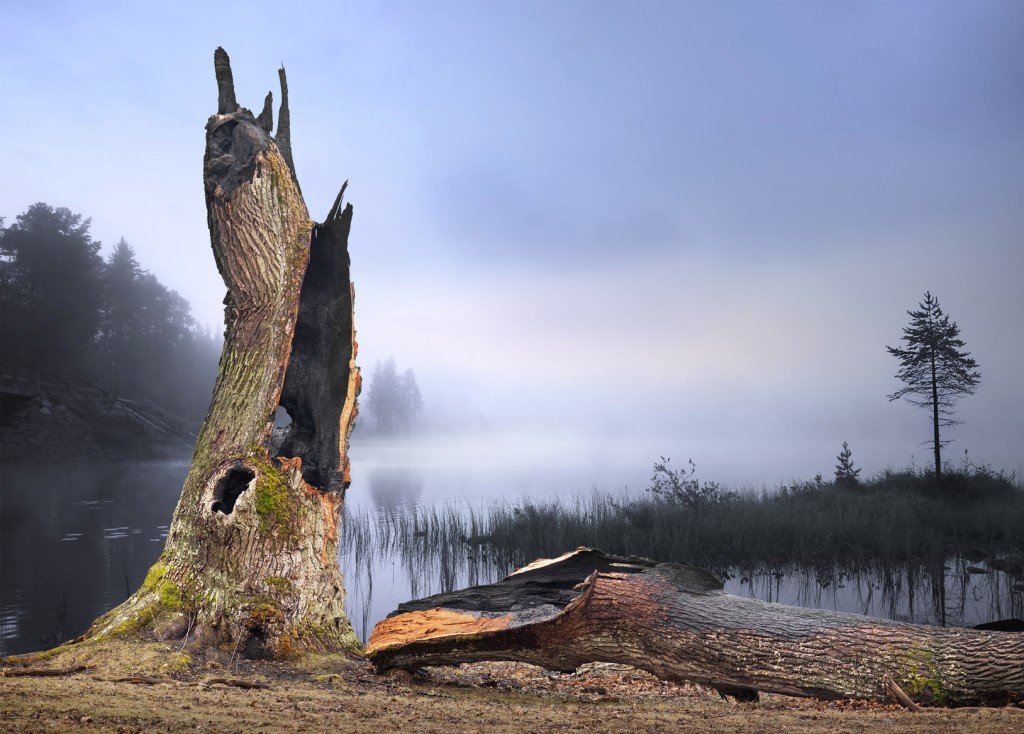
In fact, some trees will even burst into flames or explode following a lightning strike. This is because during a lightning strike, the sap in the bark of the tree is subject to extreme temperatures, many times hotter than the surface of the Sun, in fact! The electrical resistance causes the sap to be overheated into steam, which can make the tree explode instantaneously.
Also Read: Surviving A Thunderstorm: What’s The Safest Clothing And Body Posture To Survive A Lightning Strike?
How well do you understand the article above!

References (click to expand)
- Lightning Damage to Tree Might Not Be Instantly Apparent | North Carolina Cooperative Extension - wayne.ces.ncsu.edu
- Lightning Damage - Trees and Shrubs | University of Maryland Extension - extension.umd.edu
- When Lightning Strikes, Is The Tree Out? - Purdue University. Purdue University
- Lightning Safety - The University of Vermont. The University of Vermont
- TOP-10 MYTHS OF LIGHTNING SAFETY - emergencypreparedness.cce.cornell.edu
